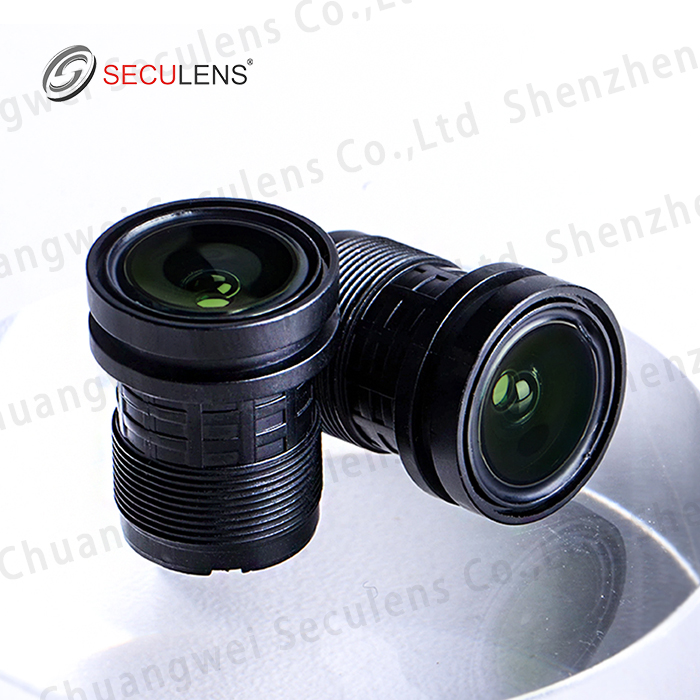This is a basic knowledge of optical lens to share with you. Optical lens is an essential component in machine vision system, which directly affects the quality of imaging and the implementation and effect of algorithm. In addition, strive to select and fold the appropriate lens and reduce the cost of machine vision system, so as to make your security camera more competitive in the market.

There are many specifications of optical lenses, and sometimes you can't help feeling dizzy. Optical lens can be divided into short focus lens, medium focus lens and long focus lens; From the field of view, there are wide-angle, standard and telephoto lenses; The structure is divided into fixed aperture fixed focus lens, manual aperture fixed focus lens, automatic aperture fixed focus lens, manual zoom lens, automatic zoom lens, automatic aperture electric zoom lens, electric three variable (aperture, focal length and focus can be changed), etc. SECULENS is a professional optical lens manufacturing factory. The factory has been producing, manufacturing and operating for 16 years. It has developed and operated more than 1500 lens products and sold in more than 80 countries and regions around the world. The products are of good quality and very cheap.
According to our experience,the following is a brief introduction to the classification of optical lens products. If you need more detailed information, please contact us.
Structurally:
1. Fixed aperture fixed focus lens
The lens has only one focus adjustment ring that can be adjusted manually. Rotating the ring left and right can make the image imaged on the CCD target most clear. Without the aperture adjustment ring, the aperture cannot be adjusted, and the luminous flux entering the lens cannot be changed by changing the lens factors, but only by changing the illuminance of the field of view. Simple structure and low price.

2. Manual aperture focusing lens
Compared with the fixed aperture fixed focus lens, the manual aperture fixed focus lens adds an aperture adjustment ring, and the aperture range is generally from F1 2 or F1 4 to all off, which can easily adapt to the ground illumination of the subject site. The aperture adjustment is carried out manually. The illumination is relatively uniform and the price is relatively cheap.

3. Automatic aperture fixed focus lens
A micro motor driven by gear is added to the aperture adjustment ring of the manual aperture fixed focus lens, and 3 or 4-core shielded wires are led out from the driving circuit and connected to the automatic aperture interface base of the camera. When the luminous flux entering the lens changes, the charge generated by the CCD target surface of the camera changes accordingly, so that the video signal level changes, and a control signal is generated and transmitted to the automatic aperture lens, so as to make the motor in the lens rotate forward or reverse to complete the task of size adjustment.

4. Manual aperture focusing lens
If the focal length is variable, there is a focal length adjustment ring, which can adjust the focal length of the lens within a certain range. Its variable ratio is generally 2 ~ 3 times, and the focal length is generally 3.6 ~ 8mm. In practical application, the market angle of the monitored market can be easily selected by manually adjusting the zoom ring of the lens. However, when the camera installation position is fixed, it is very inconvenient to manually adjust the zoom frequently. Therefore, after the completion of the project, the focal length of the manual zoom lens is rarely adjusted. It only acts as a fixed focus lens.

5. Automatic aperture electric zoom lens
Compared with the automatic aperture fixed focus lens, two micro motors are added, one of which is connected with the zoom ring of the lens, and the focal length of the lens can be controlled when it rotates; The other motor is combined with the focusing ring of the lens, and the focusing of the lens can be completed when it is controlled to rotate. However, due to the addition of two motors and the increase in the number of lens groups, the volume of the lens increases accordingly. 6 compared with the automatic aperture electric zoom lens, the electric three variable lens only changes the control of the aperture adjustment motor from automatic control to manual control by the controller.

Interface type
1. Type C lens
The focal length of the flange is the distance between the mounting flange and the convergence point of the parallel light of the incident lens. The focal length of the flange is 17.526mm or 0.690in. Mounting rib: diameter Lin, 32 teeth in。 The lens can be used in linear array sensors with a length of less than 0.512in (13mm). However, due to geometric deformation and market angle characteristics, it is necessary to identify whether the short focus lens is suitable. For example, a lens with a focal length of 12.6mm should not use a linear array with a length greater than 6.5mm. If the distance from the lens to the array is determined by the focal length of the flange, the lens ring shall be increased when the magnification of the object is less than 20 times. The loop is added behind the lens to increase the distance from the lens to the image, which is. 5-10% of the focus range of most lenses. The lens extension distance is the focal length / object magnification.

2. CS lens
With a 5 mm adapter ring,a C lens can be used on a CS-mountcamera.

2022-04-01 11:54:20




Fisheye lens 1.85mm FT1085 12MP


Starlight Lens 2.8mm 0357


Car Lens 2.6mm SECU8204

Darklight Lens 10207-8MP+H243+IR0316 4mm 1/1.8"

Darklight Lens 10206-8MP+H243+IR0316 2.8mm 1/1.8"

Darklight Lens 10197+IR06312 2.8mm 1/1.8"

Fisheye lens 1.8mm 5MP 5185

Distortion Free Lens 3526 3.2mm TTL:15.5

Integrated machine 6-192MM S64192-32YT 30X

Integrated machine10-40MM S1040-18YT 4X